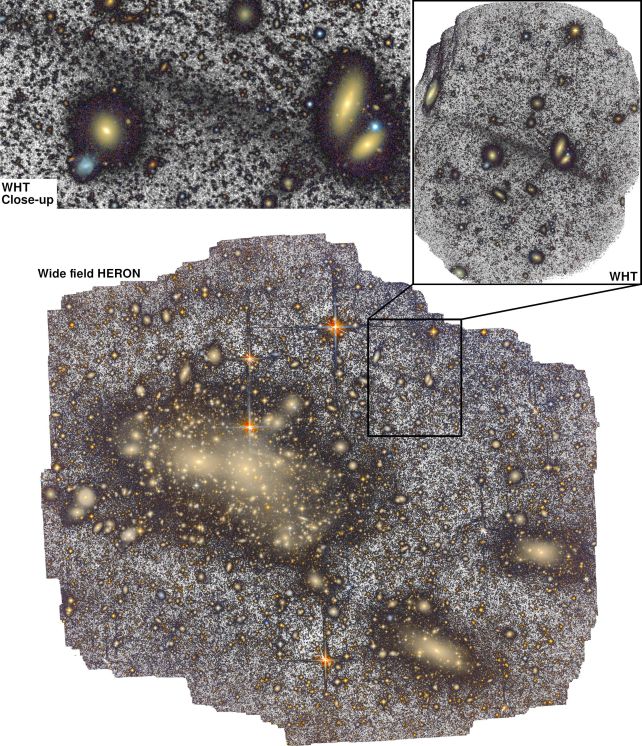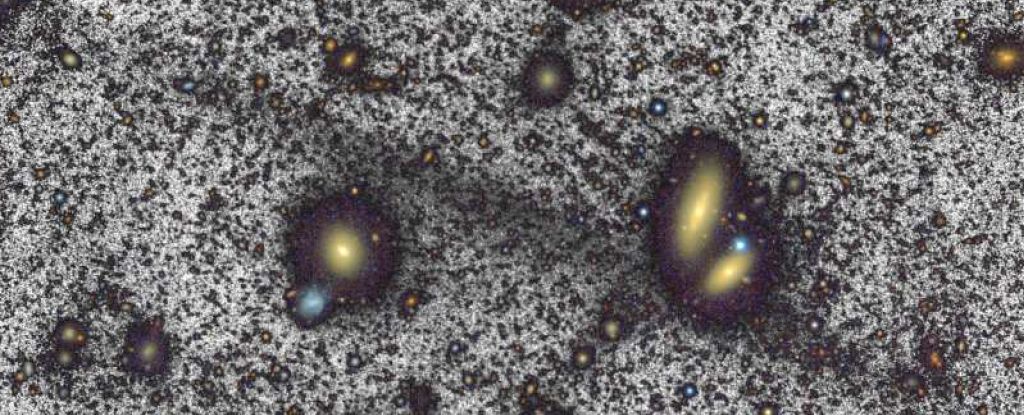A mesmerizing river of stars has been discovered coursing through intergalactic space within a cluster of galaxies located about 300 million light years away.
These interstellar ribbons are known as stellar streams, and the recently named Giant Coma Stream is the longest ever observed, measuring a staggering 1.7 million light-years. In a groundbreaking discovery, this faint river marks the first of its kind to be found outside of a galaxy.
Unveiling the unexpected, the find challenges expectations within the dynamic and gravitationally complex environment of a galaxy cluster, where such delicate stellar streams are not anticipated to persist over time.
Remarkably, this discovery offers an exceptional opportunity for the study of galaxy clusters and the enigmatic clumpy dark matter contained within.
“This colossal stream crossed our path serendipitously,” noted observational astrophysicist Javier Román of the University of Groningen in the Netherlands and the University of La Laguna in Spain. “We were initially studying halos of stars surrounding large galaxies.”

Stellar streams are relatively prolific within the Milky Way galaxy, believed to be remnants of dense globular clusters of stars torn apart by the gravitational forces of the Milky Way. However, they are challenging to identify due to the difficulty in ascertaining stellar distances and their faintness.
Similarly, in intergalactic space, the dimness of these streams presents obstacles in locating loose associations of objects. The cosmos abounds with luminous entities, often leading to the oversight of faint structures.
Nonetheless, advancements in telescope technology and analytical methods have ushered in the revelation of previously elusive celestial phenomena, exemplified by the detection of the Giant Coma Stream.
Román and his team were examining the Coma Cluster, a conglomeration housing thousands of known galaxies, utilizing powerful telescopes to investigate subtle structures within the cluster.
Unexpectedly, their observations unveiled an extensive ribbon of stars that was distinct from the typical galactic halo, intriguingly positioned between galaxies rather than confined within a singular entity.
Analyzed in detail, this ribbon resembled the stellar streams within the Milky Way, yet significantly grander in scale.
Although seemingly tranquil and expansive, galaxy clusters are gravitationally turbulent environments, with massive objects exerting formidable forces upon one another.
Hence, the presence of a stellar stream within such an environment defies expectations, offering insights into its origins, as researchers were able to determine via simulations that such rare streams are formed in galaxy clusters from dwarf galaxies disintegrated by the gravitational pull of larger galaxies.

While its longevity in cosmic terms remains dubious, this discovery presents a unique opportunity to explore the cluster environment and provides valuable insights into the study of the enigmatic dark matter pervasive within galaxy clusters.
The existence of the Giant Coma Stream further suggests the potential discovery of similar structures in other clusters, prompting researchers to advocate for further exploration utilizing advanced telescopes, to unravel the multitude of secrets that may still be concealed.
“We are keen to observe individual stars within and near the stream to glean more insights about dark matter,” expressed astronomer Reynier Peletier of the University of Groningen.
The study has been detailed in the journal Astronomy & Astrophysics.


